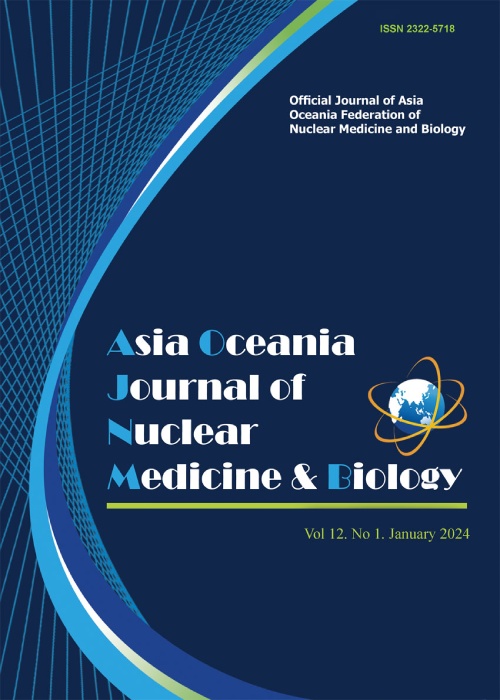Systemic atherosclerotic plaque vulnerability in patients with Coronary Artery Disease with a single Whole Body [FDG]PET-CT scan
Author(s):
Article Type:
Research/Original Article (دارای رتبه معتبر)
Abstract:
Objective(s)
Cardiovascular disease is a leading cause of morbimortality with over half cardiovascular events occurring in the asymptomatic population by traditional risk stratification. This preliminary study aimed to evaluate systemic plaque vulnerability in patients with prior Coronary Artery Disease (CAD) with a single Whole Body [FDG] PET-CT scan in terms of plaque inflammation and calcifications. Methods
Twenty-two patients referred for oncological evaluation and with prior history of advanced CAD or age and gender matched controls without cardiovascular disease, underwent a Whole Body PET-CT scan 90 min after injection of 18F-FDG. A total of 975 transaxial PET images were retrospectively analysed to assess plaque inflammation using a standardized method of analysis with averaged Target-to-Background Ratios (TBRs) at different levels, in the thoracic and abdominal aorta, carotids, LAD, common iliac and femoral arteries, and were correlated with calcium scores from the CT images. Results
TBRs from the thoracic aorta were higher in male patients than controls (1.49±0.11, p<0.05) and a gradient was observed (ascending > descending > aortic arch), and were also higher in the carotids in female patients (1.43±0.07) versus controls (p<0.05). A tendency for higher levels of plaque inflammation in the abdominal aorta was noted in all groups, but no significant FDG uptake was found either in the iliac or femoral arteries in any group. Plaque inflammation was also higher in the LAD in males but with large variations. Higher levels of calcifications were noted in the LAD, infra-renal abdominal aorta and common iliac arteries, but without significant correlation with plaque inflammation except sporadic overlapping. Conclusion
Patients with advanced CAD are at risk for vulnerable inflamed atheromas in other territories such as the thoracic aorta and carotid arteries, underpinning the systemic nature of the atherosclerotic disease. Coexistence with calcifications is rare, suggesting a different functional status of the plaques and different stages of the disease. Evaluation of subclinical systemic plaque vulnerability in CAD with a Whole Body [FDG] PET-CT scan is feasible and a potentially useful biomarker to assess subclinical vascular risk for risk stratification and treatment optimization, but further studies are needed.Keywords:
Language:
English
Published:
Asia Oceania Journal of Nuclear Medicine & Biology, Volume:8 Issue: 1, Spring 2020
Pages:
18 to 26
magiran.com/p2077809
دانلود و مطالعه متن این مقاله با یکی از روشهای زیر امکان پذیر است:
اشتراک شخصی
با عضویت و پرداخت آنلاین حق اشتراک یکساله به مبلغ 1,390,000ريال میتوانید 70 عنوان مطلب دانلود کنید!
اشتراک سازمانی
به کتابخانه دانشگاه یا محل کار خود پیشنهاد کنید تا اشتراک سازمانی این پایگاه را برای دسترسی نامحدود همه کاربران به متن مطالب تهیه نمایند!
توجه!
- حق عضویت دریافتی صرف حمایت از نشریات عضو و نگهداری، تکمیل و توسعه مگیران میشود.
- پرداخت حق اشتراک و دانلود مقالات اجازه بازنشر آن در سایر رسانههای چاپی و دیجیتال را به کاربر نمیدهد.
دسترسی سراسری کاربران دانشگاه پیام نور!
اعضای هیئت علمی و دانشجویان دانشگاه پیام نور در سراسر کشور، در صورت ثبت نام با ایمیل دانشگاهی، تا پایان فروردین ماه 1403 به مقالات سایت دسترسی خواهند داشت!
In order to view content subscription is required
Personal subscription
Subscribe magiran.com for 70 € euros via PayPal and download 70 articles during a year.
Organization subscription
Please contact us to subscribe your university or library for unlimited access!


